
Oostvoorne Airfield
(the Dutch version of this page is currently better updated)
In the early spring of 1928 the need was felt to create an airfield near the village of Oostvoorne, now part of the county Westvoorne, a quiet yet vibrant and attractive touristical area.
The need of a new to develop air strip was primarely felt by the users of the in 1926 opened 18 hole golf course in the same village, which also happened to be aeroplane owners.
These "Flying Golfers" were mainly living in or near the town of Rotterdam and were also members of the still existing Rotterdamsche Aero Club (R.A.C.). Normal travel time by road from Rotterdam to Oostvoorne was no less then two hours which was a reasonable argument for the official Dutch Air Council to co÷perate in the granting of a permit to operate an airfield in the Oostvoorne rural dune area.
During the years before the creation of the
Oostvoorne airfield the nearby beach was often used for landing and take off
with aeroplanes.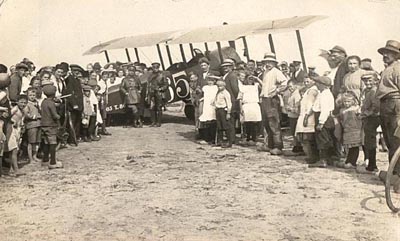
This picture which must have been taken in between 1919 and 1922 is showing a Spijker V2 plane of the L.V.A. (forerunner of the Royal Dutch Airforce) that has just made a landing on the beach and is being admired by the locals. The pilot was Sgt. W. warnaar.
The far less then ideal circumstances on the beach were another reason to make an official air strip.
The local landowner "NV Maatschappij Voorne's Duin" was approached and found to be cooperative in the creation and consequential exploring of an airfield on their property.
A suitable location was soon found and even before an official permit was granted the preparations of the 9 hectares dune area had begun. A suitable drainage of the field was made was made and lots of coal ash was used for metalling the surface.
Apart from the interest of private planes there was also genuine interest from the Marines Flying section as well as the KLM (Royal Dutch Airlines) which were anticipating a touristic service from Waalhaven Airport in Rotterdam to Knokke in Belgium, possibly incorporating Oostvoorne Airport.
The oilcompany A.P.C. regarded the new Airport as
a potential interesting new customer. A contract was made for the delivery of
oil and petrol by A.P.C. In the same contract A.P.C. arranged for a mast and
wind-sock, the supply of several tools and a shed to be build for the storage of
their products.

Finally on Saterday August the 16th of 1930 the celebrations for the official opening of the airfield take place. After a word of welcome to the guests by the responsible man of Voorne's Duin Mr J. van Hoey Smiths, the opening ceremony is performed by Mr C. Kolff the chairman of the RAC. The first actions in the sky are a flying demonstration by four Pander EC planes from the N.L.S. (National Aeronautic School) from Rotterdam, flown amongst others by H.M. Schindt Crans and W. van der Graft.
The invited guests were entertained by the local brass band "De Volharding" and a large marquee was erected in a corner of the field to accomodate a well stocked bar with Champagne and Sherry in ample supply. Some 200 guests were invited but if they have actually been in such large crowds is unlikely.
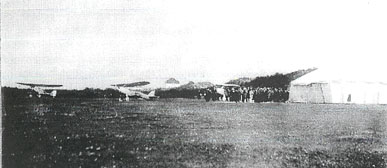
Opening day with the marquee on the right.
The wheather conditions on the day of the opening were far from ideal. A Fokker plane carrying special guests to the event returned home after having circled above the field a couple of time but did not dare to land.
The monthly magazine "Het Vliegveld" from the RAC reported that the opening was taking place during a "pleasing" but torrential rain.
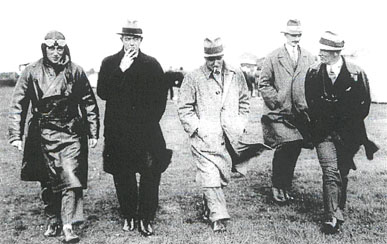
From left to right: instructor Schmidt Crans, RAC voorzitter C Kolff , Van Tijen, unknown, J. van Hoey Smith
It is very doubtfull if any of the guests used the opportunity mentioned in the invitations to have a bath after the official part of the opening on a specially allocated section of the nearby beach.
The interest in the newly opened air field shortly after the opening was so big that even Amstel Brewery from Amsterdam investigated the possibilities of the building of a hotel south west of the field.
Soon after planes had atually started to use the air field it turned out that the irrigation of the field was insufficient.

Starting the engine by hand cranking the propellor
Quite often most of the field was hiding under water what did not look very attractive to land looking from an aeroplane. Also was the direction of the runway in relation to the wind direction not always ideal. Besides the building of a little windmill in a corner of the field to encourage water drainage they also invested in an engine driven pump which turned out to be expensive in fuel.
In the spring of 1934 a start is made to enlarge the airfield in north west direction so that a long enough stretch of runway could be had with different wind directions. Work is carried out under the supervision of the Heidemij using a group of unemployed workers made available by the local council.
On April 30th the work is finished and pilot Aler from KLM approves the new situation after landing a "heavy"cargo plane.
On May 26 the Ministry grants a permission for use of the airport by Koolhoven FK 43 and Fokker F VII planes
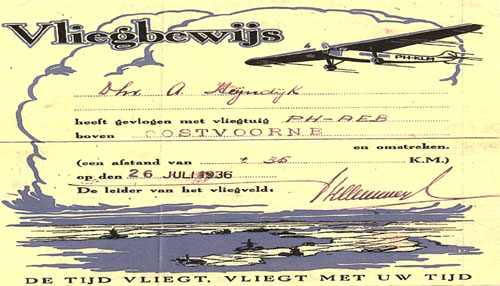
In July 1936 KLM organises local sightseeing flights above the area. It was a big succes. The locals and the KLM were happy. Several older inhabitants of Oostvoorne still remember these Air Shows. Some even still have an old ticket to prove that they were involved in the actions and onboard a KLM plane.
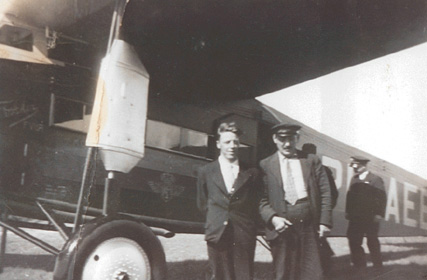
The KLM operated PH-AEB during flights on July 26th 1936
Also the Rotterdam Glider Club used Oostvoorne Airport from September 1937 to land and go up into the air aided by a winch.
Although mainly aimed at leisure flights the airport also came into use for some bussiness and commercial flights. Also was the Airport used several times to transport sick and wounded.
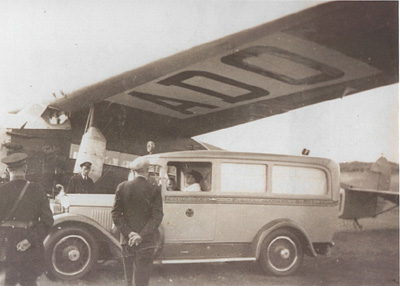
On the picture on the right is a 1927 Cadillac based ambulance from garage "De Toekomst" carrying a patient which has just been flown in by the KLM Fokker VII PH-ADO piloted by Adriaan Viruly.
An important promotor and frequent user of Oostvoorne Airfield was a RAC board member Mr. M.A.G. van der Leeuw.
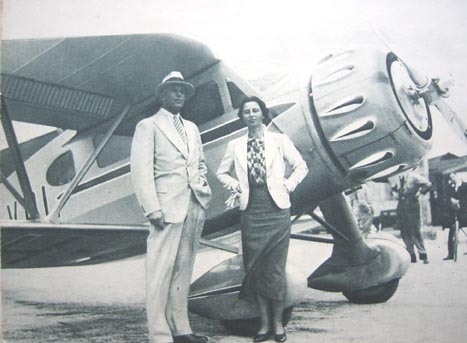
Mr. Van der Leeuw and his wife together with the WACO plane.
He was also a director of N.V. de erven Weduwe Van Nelle, a large coffee and thea factory in Rotterdam. As he lived in nearby Rockanje he travelled up and down to work in his plane which was stationed at the airfield not far from his home. It was regarded as very advanced in those days and the press was giving it a lot of attention.
In June 1931 Mr v.d. Leeuw had a special 14,5 by 10 meter hangar build in the north east corner of the field. The owners of the field, Voorne's Duin, commandeered it to be painted green, regarded as a suitable colour in this nature reserve area.
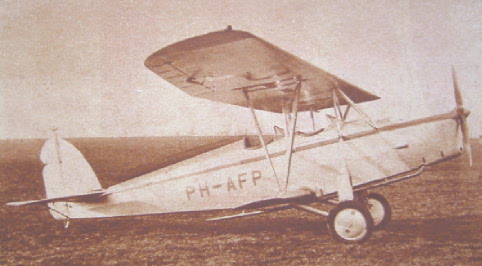
Van der leeuw started his flying career with a Dutch build Pander type EH, registered PH-AFP. (picture on the left)In November 1931 he swopped this plane for a De Havilland DH 80 Push Moth, registered PH-MAG. It is with this plane that Van der leeuw accompanied by his wife even made a trip to Momabassa in east Africa.
In 1933 Van der leeuw buys himself another new plane, this time a very sophisticated WACO cabin biplane with on board radio. At one time he managed with this WACO a non stop flight from Austria to Eindhoven in five hours.
On December 3rd 1936 disaster strikes for Van der
leeuw. Returning on a bussiness flight from Hastings in England he is hindered
by patches of fog. After a stop at Oostende in Belgium where he informed about
the wheather conditions in Holland he continues to Rotterdam's Waalhaven Airport
where the fog turnes out to be really dense. What exactly happened is never
established but rumour has it that cornering at a too slow speed deemed the WACO
to dive into the nearby harbour. Despite the fact that there were eye wittneses
who could organise an immediatiate rescue action it was not possible to save the
pilots live. When after a seven hour struggle the plane is located and above
water it turns out that Mr Van der leeuw has died.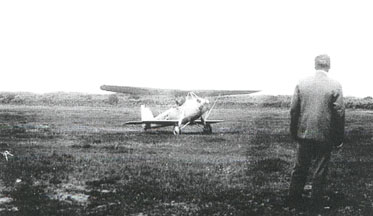
Late 1938 it becomes clear that running this Airfield on a healthy basis is an impossible task. Pilots keep on complaining about the water logged runway. Landing in a pool of unknown depth is not attractive. Request for further improvements are not honoured by Voorne's Duin.
Early 1939 the dune area incorporating the airfield is sold. Not to the local council with whome they already had some sort of agreement in 1934 but to the Administratiefonds in Rotterdam. As the aims of the Administratiefonds were not incorporating aeroplane activities they requested the Ministry of Air to withdraw the airfields permit on february 25th 1939,.
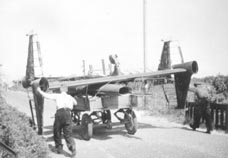
Possibly searching for a safe landing spot on the
airfield a couple of Fokker G-1's land on the nearby beach on the 10th of May
1940. These fighter planes which had taken off from Waalhaven airport hunting
down some German invaders were starving of fuel after some heavy battle. New
fuel arrived too late and anyway after the Germans had set fire to the Fokker
planes. On the pictures shown you can see the locals moving the remains of the
planes on horse drawn farm carts to a so far unknowm destination. If any remains
of these can be traced is currently investigated by the Fokker G1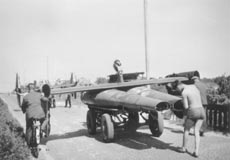 Foundation.
Foundation.
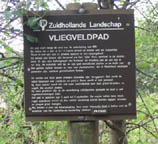
Untill this day the spot of the old airfield is easily found. Its in a nature reserve park ran by Zuid Hollands landschap. (photo www.rutgerbooy.nl)
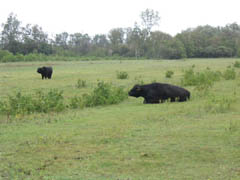
A nice walk will bring you on the old airfield where now Galloway catlle is grazing and orchids grow ! (photo: www.rutgerbooy.nl)
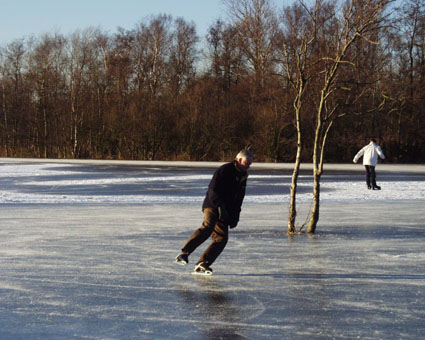
If wheather permits, the skating club Tenellaplas organises a skating rink in winter on the still damp airfield.
Interesting info for this article was found in the following books:
"Het vliegveld te Oostvoorne" H. v.d. Graaf 1992
"Voorne Verdedigd" W. Vastenhoud 1992
"Nederlandsche Luchtvaarders" L.C. Graaf van Limburg Stirum 1936
Also helped by:
Historic Society Westelijk Voorne
County Archive Voorne Putten Rozenburg
A very interesting link on Dutch Aeroplane related history: Dutch Historic Aviation Sites
Some nice stories on Pander Planes
Any questions or remarks ? Just give send me an Email
Back to Homepage of Bas de Voogd